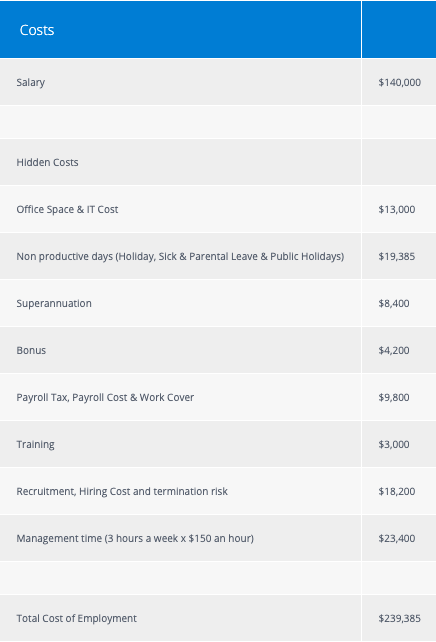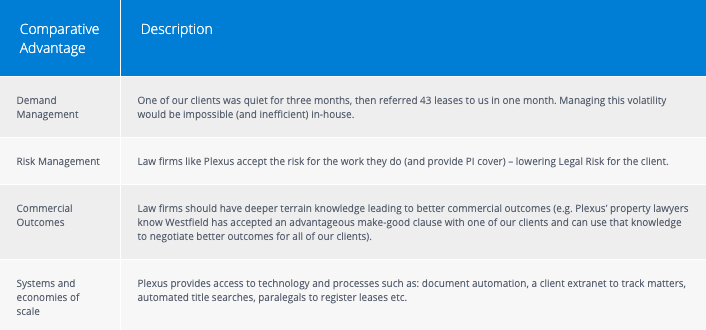How much does a lawyer cost?
A simplistic view on cost accounting is causing General Counsel to misallocate resources.
When my father started his career in the early 60s conventional wisdom suggested competitive advantage was generated through a business’s ability to ‘own, manage, and directly control its’ assets’. Back then businesses employed chefs for the company cafeteria, maintenance men to maintain their buildings, printers, cleaners, security; practically anything a business might need.
When everyone woke up from the party in the early 90s, they recognised that lean, highly focused businesses were dramatically outperforming bloated, vertically integrated organisations. Over the next 25 years, improvements in cost accounting and management thinking led businesses to focus on the activities that are ‘core’ to the business, and outsource anything else – even if the cost was higher.
Yet most General Counsel still pursue a strategy at odds with the rest of their organisation: ‘Keep hiring to bring work in-house…until the CFO stops you’.
In an industry traditionally dominated by suppliers with super-high profit aspirations this approach is not without its’ merits. Total Legal spend has declined largely as a result of the growth of in-house teams.
Yet the business case for an expansion in headcount is often based on a simplistic view of cost: compare the rack rate of a Law Firm with the salary of a Lawyer and (rightly) conclude the salary of a Lawyer is lower.
As my father said when I was buying my first car “cost is what you pay, value is what you get”.
However, as the GC Toolkit expands with modern Legal service technology providers such as Plexus, with offerings like Plexus Gateway, Engage secondments and Promotion Wizard, GCs need to have a deeper understanding of cost and value.
An in-depth analysis of cost needs to take into account the ‘headline costs’ like salary, ‘hidden costs’ such as payroll tax, and ‘comparative advantages’ such as access to proprietary systems, or knowledge.
For example, let’s break down the cost of employing a mid-level property Lawyer below:

As you can see a $140,000 salary quickly expands to $240,000 in total cost. If we take this figure and divide it by the average annual ‘billable hours’ for an in-house Lawyer (the industry medium is around 850 hours) we get an effective cost of $282 per hour (or about $1100 a lease).
However, the buck doesn’t stop there when calculating ‘value’. As you know, there are comparative advantages to an external supplier:

As this analysis shows, a simplistic ‘headline’ comparison may suggest hiring another Lawyer to do property leasing is ‘cheaper’.
However, it is only when you apply a ‘value’ lens to the analysis that you see the full picture – you are likely to get more value from outsourcing this project work to a specialised secondee who can focus solely on this project but not add to your Legal headcount.
As my father said when I was buying my first car “cost is what you pay, value is what you get”, GC’s who heed this advice can dramatically improve their ROI.
The world's top GCs work with Plexus
As the global economy moves faster and becomes increasingly volatile, organisations must radically evolve their operating models to more dynamically identify and respond to opportunities and threats. Plexus helps leading GCs shift their organisational design, evolve their talent competencies and digitise their functions to deliver faster, most cost-effective and more agile legal support.
Request a call-back
One of our consultants will be in touch ASAP to answer your questions and determine your requirements.
Want to speak to someone instead? Call us on 1300 983 907
Thank you
One of our consultants will reach out to you shortly.
Related Content
We use cookies on this site to enhance your user experience and improve our services. By using our website, we assume you're ok with this. View our privacy policy for details.
Get your free eBook!
Modernise your legal function with the Digital Transformation Guide for General Counsels.
Hooray!
The eBook is on its way to your inbox. You can also download via the link below.
Download now